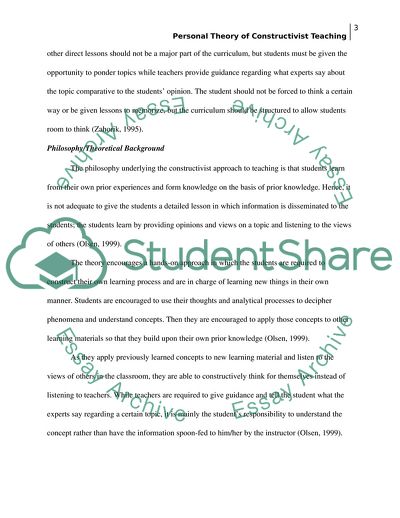Cite this document
(Personal Theory of Constructivist Teaching Essay Example | Topics and Well Written Essays - 1250 words, n.d.)
Personal Theory of Constructivist Teaching Essay Example | Topics and Well Written Essays - 1250 words. https://studentshare.org/education/1778148-personal-theory-for-constrive-teaching-methods
Personal Theory of Constructivist Teaching Essay Example | Topics and Well Written Essays - 1250 words. https://studentshare.org/education/1778148-personal-theory-for-constrive-teaching-methods
(Personal Theory of Constructivist Teaching Essay Example | Topics and Well Written Essays - 1250 Words)
Personal Theory of Constructivist Teaching Essay Example | Topics and Well Written Essays - 1250 Words. https://studentshare.org/education/1778148-personal-theory-for-constrive-teaching-methods.
Personal Theory of Constructivist Teaching Essay Example | Topics and Well Written Essays - 1250 Words. https://studentshare.org/education/1778148-personal-theory-for-constrive-teaching-methods.
“Personal Theory of Constructivist Teaching Essay Example | Topics and Well Written Essays - 1250 Words”. https://studentshare.org/education/1778148-personal-theory-for-constrive-teaching-methods.


